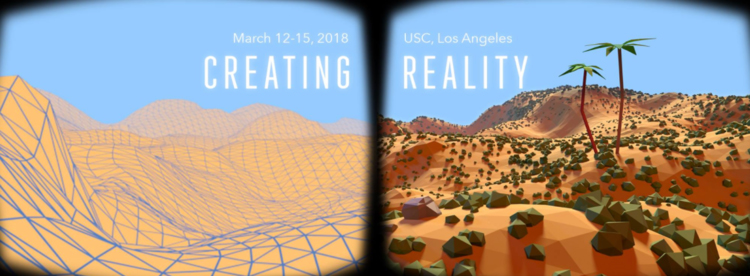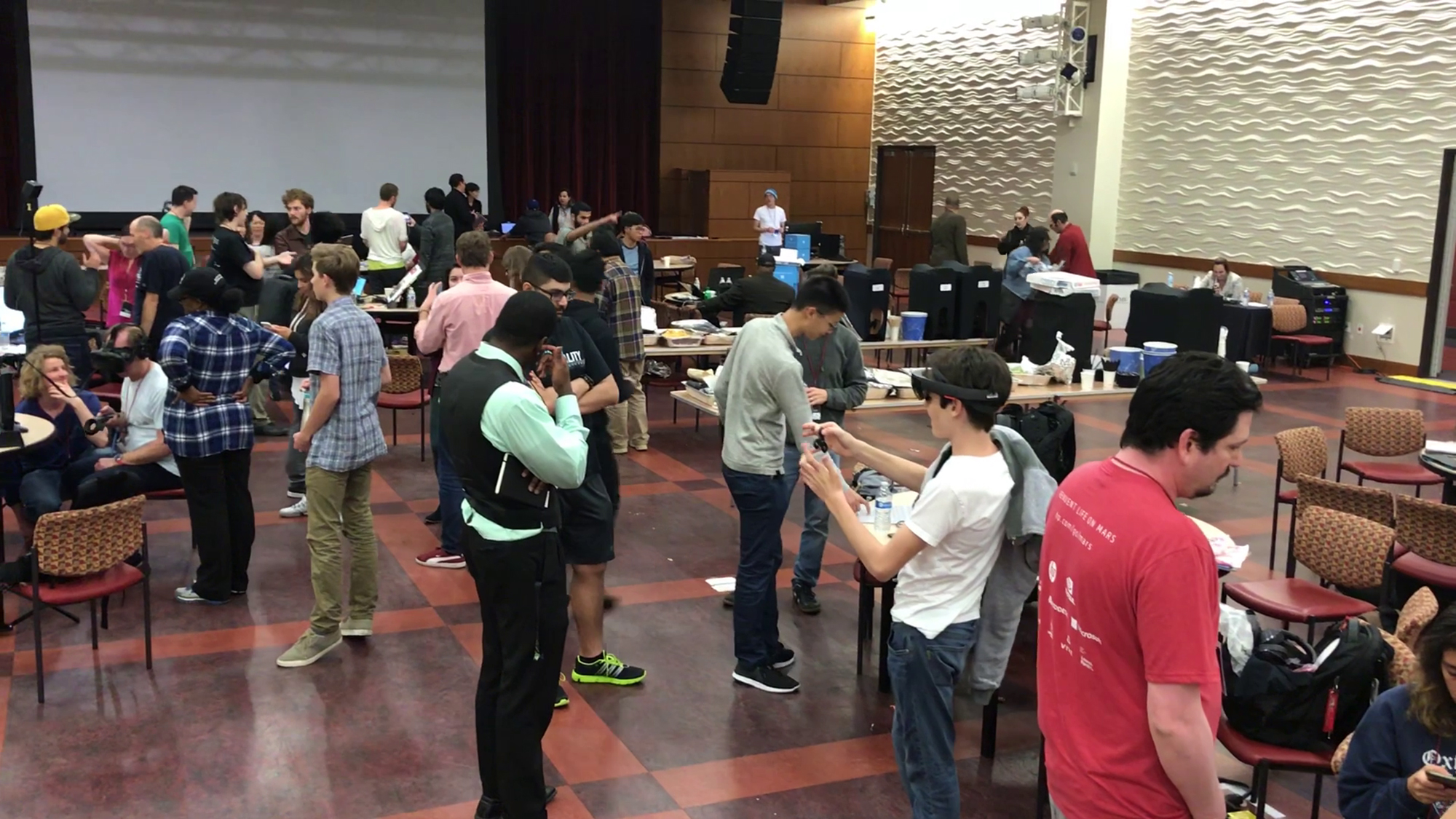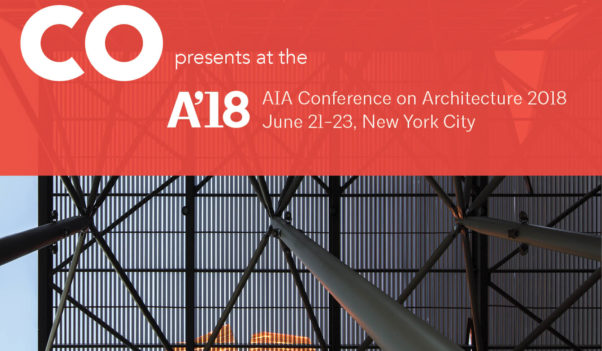Creating Reality Hackathon 2018

By Nazli Tatar
In March, I had the opportunity to participate in the Creating Reality Hackathon at the University of Southern California (USC). This event was organized by Grassroots Developer Education, Inc., the same team that created “The Reality, Virtually, Hackathon!” at the MIT Media Lab. Over four days of workshops and production, 400 participants had the opportunity to work with people in different disciplines from all over the world and learn from industry experts.
The goal of the Creating Reality Hackathon was to develop an innovative app that uses augmented or virtual reality (AR/VR) with a diverse team in 48 hours. Each group chose one of five categories to submit in, including “AR|VR for Good”, “Architecture, Engineering, and Construction”, “Content Production”, “Medical & Healthcare”, “Machine Learning & AI” and “Interactive Entertainment”. Various prizes were awarded for the different categories in addition to grand prizes for AR and VR.
The hackathon itself began with a full day of workshops and speakers. Then, we were tasked with forming teams by presenting ideas to the larger group and seeking out like-minded individuals. Project teams started that evening and wrapped up two days later. Those two days were intense (and didn’t include much sleeping) but were fueled by lots of coffee on tap.

Many of the apps this year were in the “AR|VR for Good” category. While virtual and augmented reality tools have limitless capabilities for entertainment and gaming, these technologies can also be powerful tools for education and driving positive social change. Teams who focused on VR and AR as an engine for empathy produced experiences that assisted in realizing the scale of wealth inequity, an AR guide for emergency training, and an AR map to locate sources of reliable drinking water access. My team also participated in the “AR/VR for Good” category. Our app focused on lowering the entry barriers for learning how to code. Our goal was to inspire new coders and also create a useful way of teaching the basics to people who collaborate with developers, but are not themselves coders.
The team was comprised of two computer science Ph.D. students, an anthropologist and myself. Our app, named Coding Inside-Out, is an experience for adults interested in learning object-oriented programming who don’t know where to begin. Despite good intentions, many beginner tutorials are intimidating and do not convey the power and creativity promised by learning to code; our app aims to avoid these traps.
As a designer/ developer who learned how to code only two years ago, I can say that understanding the big picture is more laborious than learning languages. Our app is not a program that teaches coding syntax, but instead is meant to illustrate the idea of coding. Instead of typing into a console, “Coding Inside-Out” brings the user inside the console; the user becomes the object the code is modifying. At first, users interact with other objects and, while doing so, can see how the code updates with each attribute and method acquired.
While my team was fortunate to qualify as one of the finalists for the “VR/AR for Good” category, I found the experience and interaction with my diverse team the most rewarding part of the hackathon. Because of my background in both design and coding, I was able to contribute to the team in diverse ways. The biggest challenge we faced was developing the narrative of the intended VR experience. Although VR storytelling is typically associated with 3D filmmaking, I learned that any application can benefit from strong storytelling in user experience design. A viewer/player in VR can choose to look anywhere, but the designer can guide their attention with graphics. At the hackathon, I learned that a well-crafted narrative flow can create an experience where the user follows the intended steps while still feeling actively engaged, rather than guided, leading to a visually simpler and more inviting experience. I look forward to bringing these lessons learned to bear on CO’s digital experience design.

